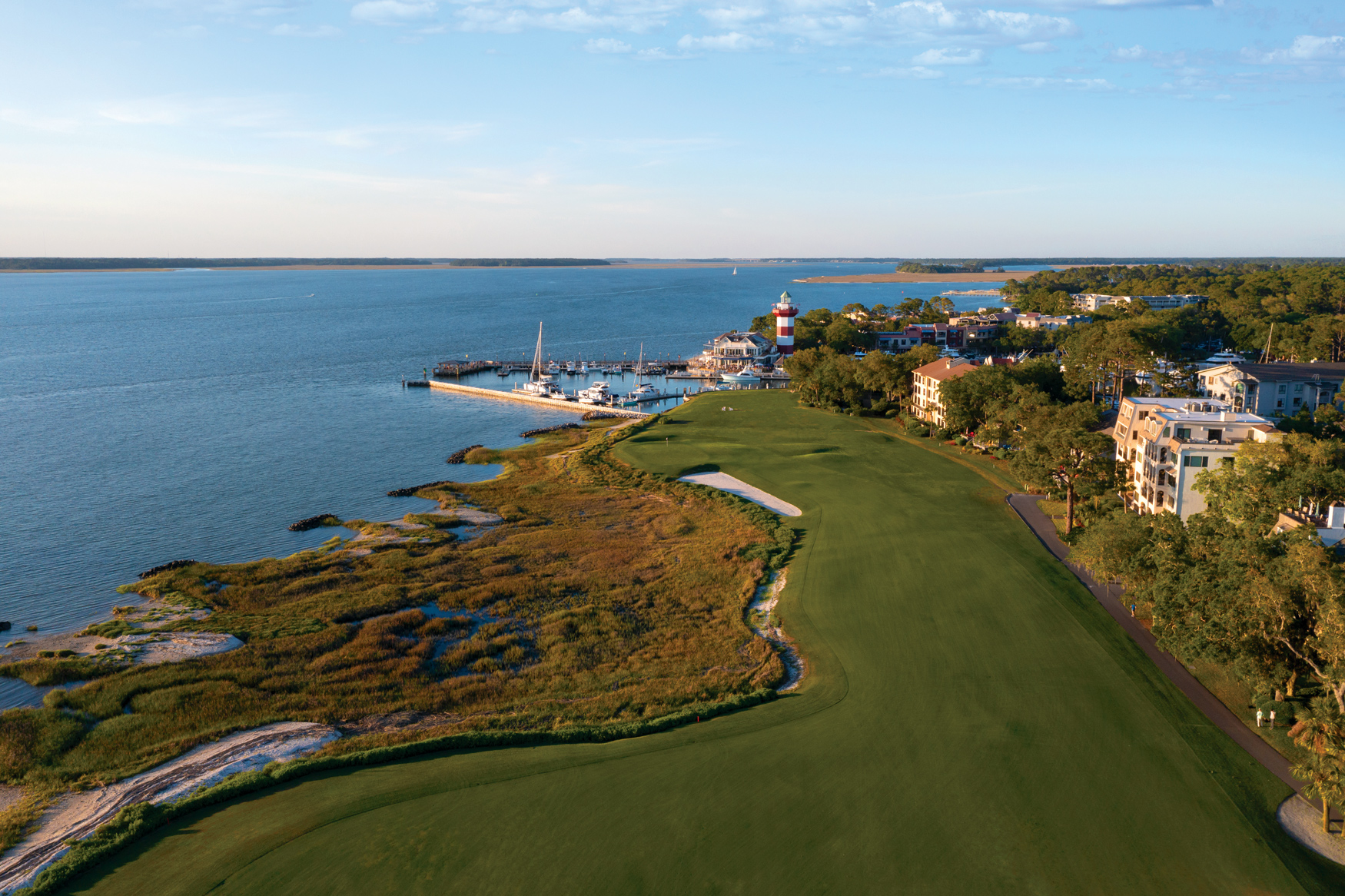
The wait for the Ryder Cup’s Wisconsin debut is nearly over. Gary D’Amato, who spent almost three decades reporting for the Milwaukee Journal Sentinel, reports on an under-rated American golf destination
Wisconsin? America’s Dairyland as a golf destination? Isn’t the state best known for cows, beer and cheese, and a National Football League team based in the frozen northern outpost of Green Bay?
Well, yes. But that’s so past tense. Over the last two decades, Wisconsin has quietly built serious momentum as a bucket-list golf mecca, with Whistling Straits and Erin Hills getting priceless exposure as major championship venues, Mike Keiser’s wondrous Sand Valley Resort taking shape in the state’s central sand barrens and older gems such as SentryWorld and the Links Course at Lawsonia just waiting to be re-discovered.
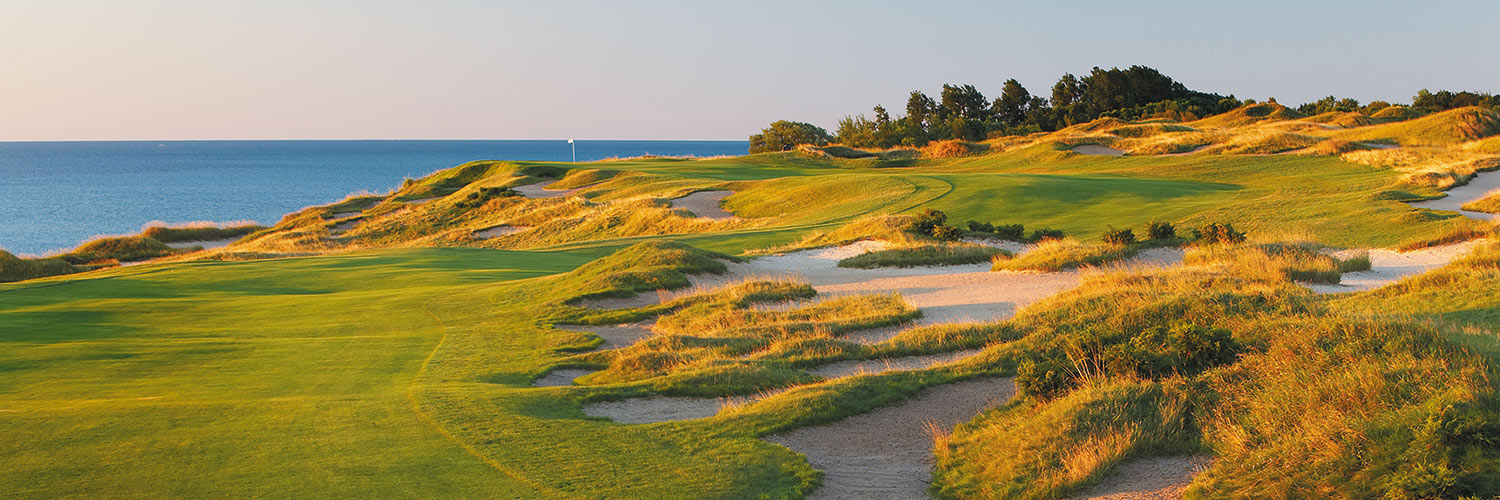
It’s a short season, to be sure, but Wisconsin’s summer climate, with its warm days, cool nights and plenty of rain, is perfect for growing bentgrass. Even the small-town nine-holers and budget-conscious munis are known for spoiling golfers with smooth, fast greens. The topography is surprisingly varied and includes rolling hills, thick forests, vast sand deposits, dramatic glacial features and the Horicon Marsh, the largest freshwater cattail marsh in the United States.
Though there was some good public golf in Wisconsin before plumbing magnate Herbert V. Kohler Jr. started building his golf empire, the beginning of the state’s ascent as a global destination can be traced directly to the opening of the original 18 holes at Blackwolf Run in 1988.
Designed by Pete Dye for the Kohler Co. and laid out on pristine land in the Sheboygan River Valley an hour north of Milwaukee, Blackwolf Run quickly earned must-play designation because of its unrelenting challenge, beauty and superb conditioning. It was the first true public golf experience in Wisconsin, and though Kohler didn’t intend for it to be a trend-setter, it became a template for great golf to follow.
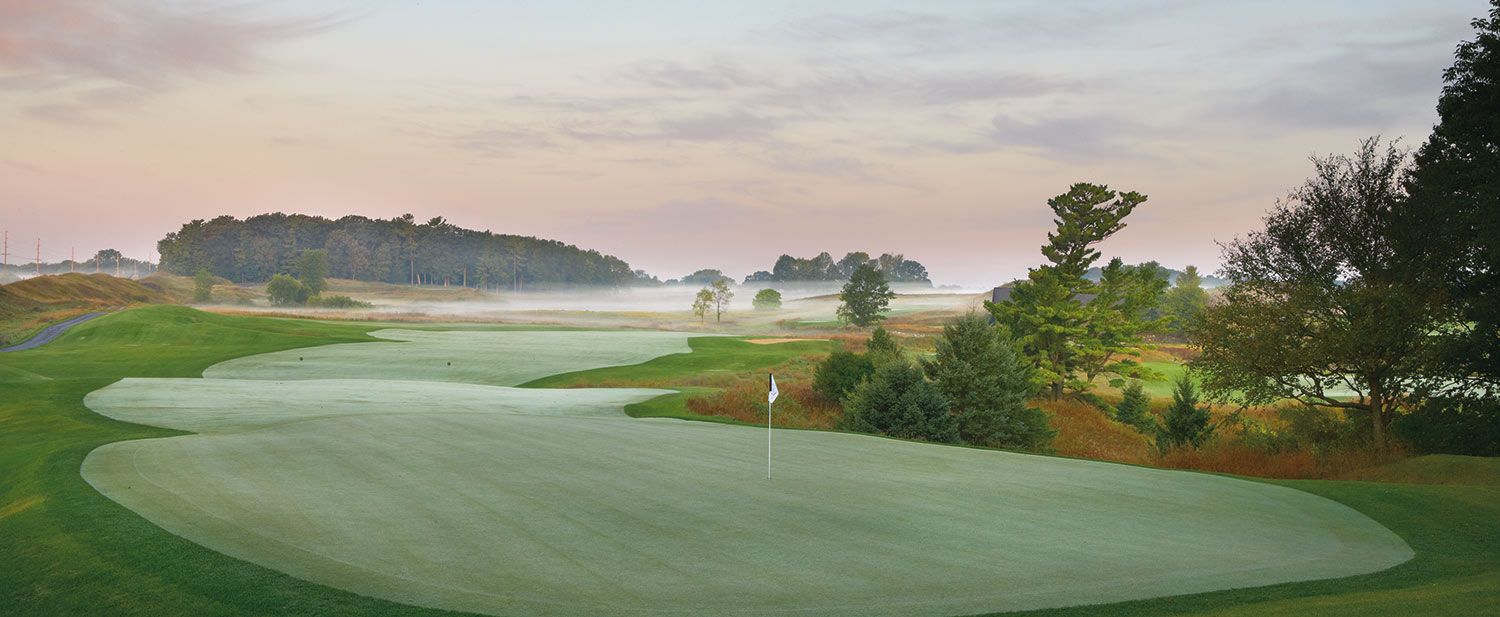
Much of it was built by Kohler himself. First, he and Dye controversially split Blackwolf Run into nine-hole segments and added nine holes to each, creating the distinct River and Meadow Valleys courses. Then, inspired by what he saw on golf trips to the British Isles, Kohler purchased a large piece of scruffy lakefront land near the village of Haven—flat as a pancake, littered with toxic waste and unremarkable except for its two miles of uninterrupted Lake Michigan shoreline.
He brought Dye out to the land and told the late visionary, “The next time I see this, I want it to look
like Ballybunion.”
And so was born Whistling Straits, among the more visually stunning courses in America with its towering dunes, knobby mounds and fescue-covered ridges—all manufactured by bulldozers—and more than 1,000 jagged-edged bunkers strewn hither and yon across the dizzying landscape. Like a true seaside links, weather conditions can (and often do) change by the hour. So complete is the links illusion that many a wind-whipped golfer has absently referred to a white-capped Lake Michigan as the “ocean.”
The Straits Course opened in 1998 and has played host to three PGA Championships, perhaps not coincidentally won by players who would soon after ascend to No. 1 in the Official World Golf Ranking (Vijay Singh in 2004, Martin Kaymer in 2010 and Jason Day in 2015). The Straits also was awarded the Ryder Cup, which was pushed back from 2020 to September 2021 by the coronavirus pandemic.
“Golf in Wisconsin has always been strong. It just wasn’t known,” said U.S. Ryder Cup team captain Steve Stricker, a small-town Wisconsin kid who never left the state and resides in Madison. He has hosted the American Family Insurance Championship on the PGA Tour Champions at University Ridge GC in his home town, one of the finest public facilities in the state.
“Herb and the Kohler family put together that masterpiece up there at Whistling Straits (and) the Blackwolf Run courses, and that kind of put us on the map. Golf is a destination all of a sudden here in Wisconsin. It’s cool to see.”

No multi-day golf trip to Wisconsin would be complete without a round or three at Erin Hills, which played host to the 2011 U.S. Amateur and the 2017 U.S. Open, the latter won by Brooks Koepka. The course was largely designed by retreating glaciers some 15,000 years ago; architects Michael Hurdzan, Dana Fry and Ron Whitten knew to leave well enough alone, moving very little dirt during construction.
The rugged and nearly treeless terrain features kettles and ridges perfectly spaced for golf, with fairways running through natural corridors to remarkable green complexes. The ninth, a short par-3 played from an elevated tee, through ever-present wind to a green surrounded by snaggle-toothed bunkers, can induce any number from 1 to 10.
Erin Hills is located some 35 minutes from downtown Milwaukee and three miles from Holy Hill, an awe-inspiring hilltop basilica that seems to tower directly over the course. From the tee on the long par-5 closing hole, the golfer is tempted to try to kick a field goal between the basilica’s twin spires.
A putting course opened in 2019 and Erin Hills has since converted its fescue fairways to bentgrass with a novel over-seeding process that required only a minimal interruption in play. Like the Straits, it must be walked.
The full Erin Hills experience requires golfers to stay the night and enjoy exceptional hospitality, boosted by an award-winning wine list, excellent menus, great service and a relaxed ambience. The club offers five Irish-style cottages—four guestrooms in each—filled with antique furniture yet also all the mod cons a golf party needs.
Sand Valley Resort, which consists of 18-hole courses designed by David McLay Kidd (Mammoth Dunes) and Bill Coore and Ben Crenshaw (Sand Valley) and a 17-hole par-3 delight called The Sandbox, is fast gaining a national reputation.
Keiser reportedly wasn’t ready to build more golf—and especially not in Wisconsin—until he saw the land, buried under tens of thousands of pine trees planted in rows and harvested by the region’s paper mills. Beneath the pine plantation, however, was an enormous sand deposit, the remnants of a prehistoric lake—200 feet deep in some places, and perfect for fescue fairways.
Located near the tiny town of Rome in Adams County, Sand Valley is modeled after Bandon Dunes, with spartan on-site lodging, an understated clubhouse, a caddie program and memorable golf. Tom Doak is designing a third “big” course, and there may be more to come.
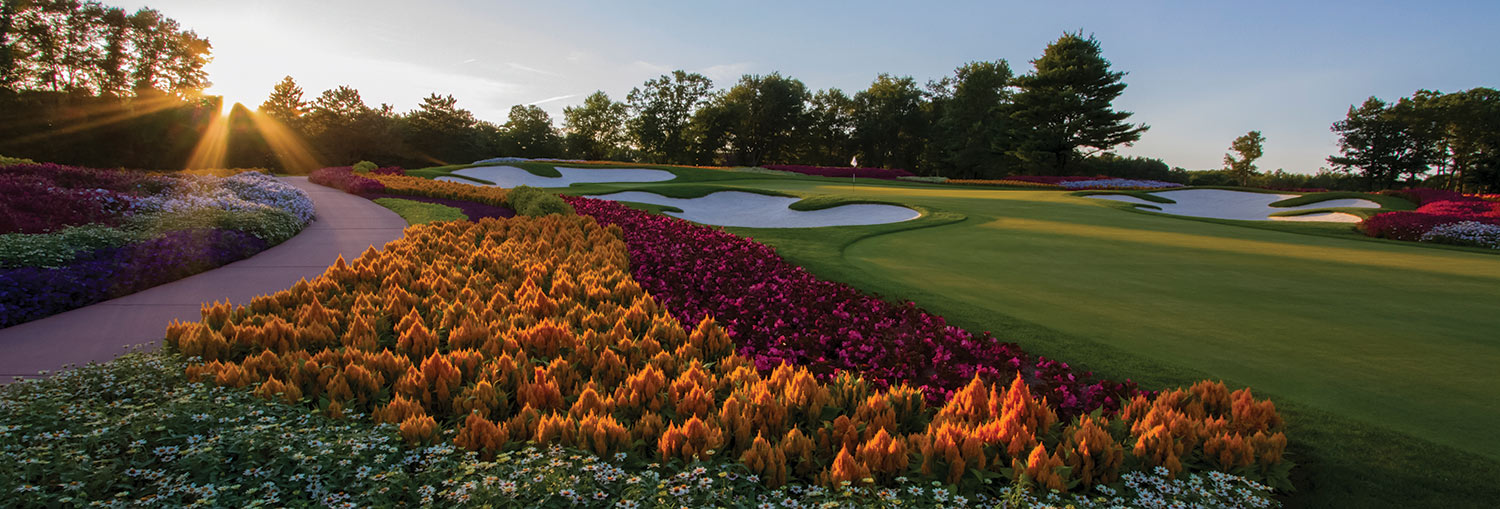
About 45 minutes north of Sand Valley, in Stevens Point, SentryWorld is on the short list of the prettiest and best-conditioned parkland courses in the Midwest. A Robert Trent Jones Jr. design, SentryWorld opened in 1982 as Wisconsin’s first upscale public course and was re-imagined during a 2014-15 renovation overseen by Jones.
Owned by Sentry Insurance, which title-sponsors the PGA Tour’s season-opening Sentry Tournament of Champions, SentryWorld features 15-minute tee times, a state-of-the-art practice facility and stringent maintenance practices. Each year, more than 20,000 flowers, mostly patagonias and impatiens, are planted around the green on the unique par-3 16th “Flower Hole.”
Opening over the coming months will be The Inn at SentryWorld, which promises to further embellish the resort’s enviable reputation with 60 guestrooms and a boutique feel.
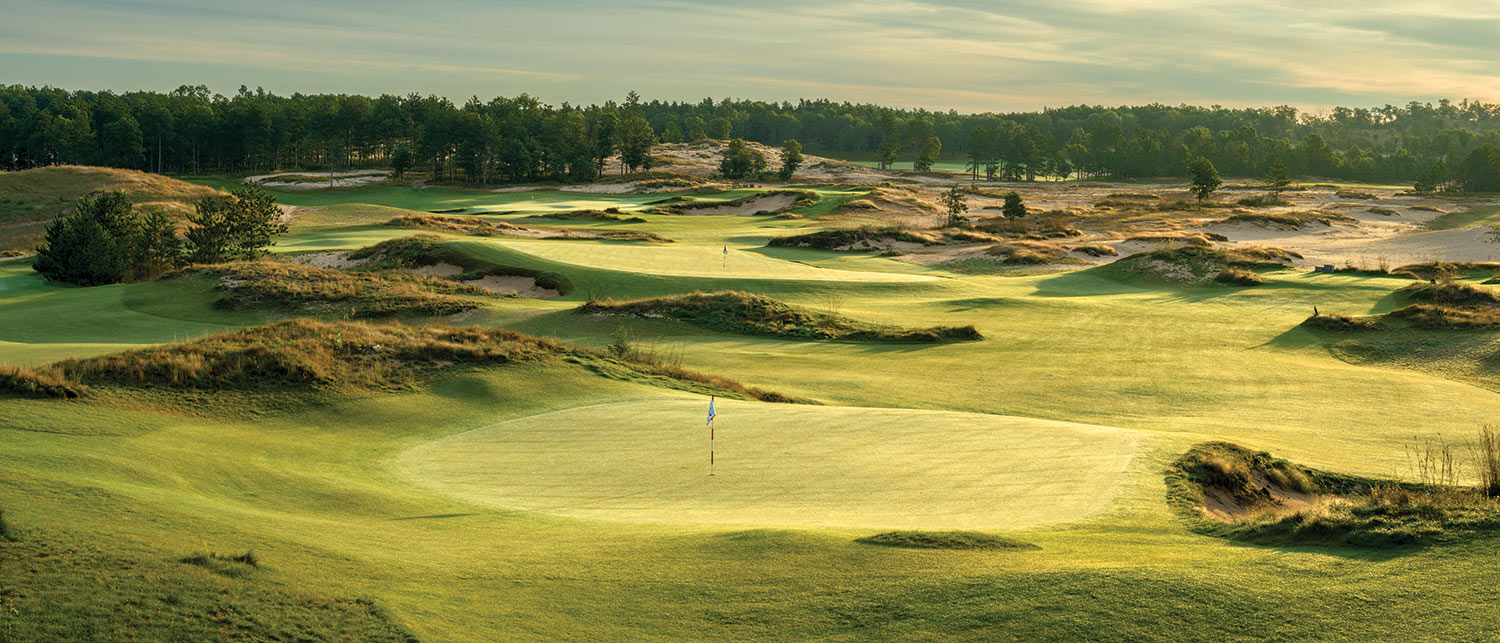
A course that for years was out of sight and out of mind is the original Links Course at the Golf Courses of Lawsonia in Green Lake, a sleepy town in south-central Wisconsin. More recently, course architecture buffs have “discovered” the 1930 gem, an inland links designed by William Langford and Theodore Moreau and considered by many to represent the duo’s finest work.
The course is nearly treeless on its interior, with emerald fairways bordered by wispy fescue rough and elevated tees offering stunning panoramic views. The Links is known for its incredible set of push-up greens, many with steep walls and 15-foot drop-offs into bunkers. The green on the par-3 seventh hole reportedly was built atop a railroad boxcar; best not to come up short and face a sheer vertical shot to an unseen flagstick some 25 feet above your head.
Golfers who fly into Milwaukee should check out the Brown Deer Park Golf Course, just 20 minutes north of the airport and the crown jewel of the Milwaukee County Parks system, which boasts 15 popular courses.
Brown Deer, designed by landscape architect George Hansen and opened in 1929, played host to the PGA Tour’s U.S. Bank Championship in Milwaukee from 1994 to the tournament’s demise in 2009. It’s where a 20-year-old Tiger Woods uttered “Hello, world,” marking his professional debut in 1996. A plaque on the first tee commemorates the event.
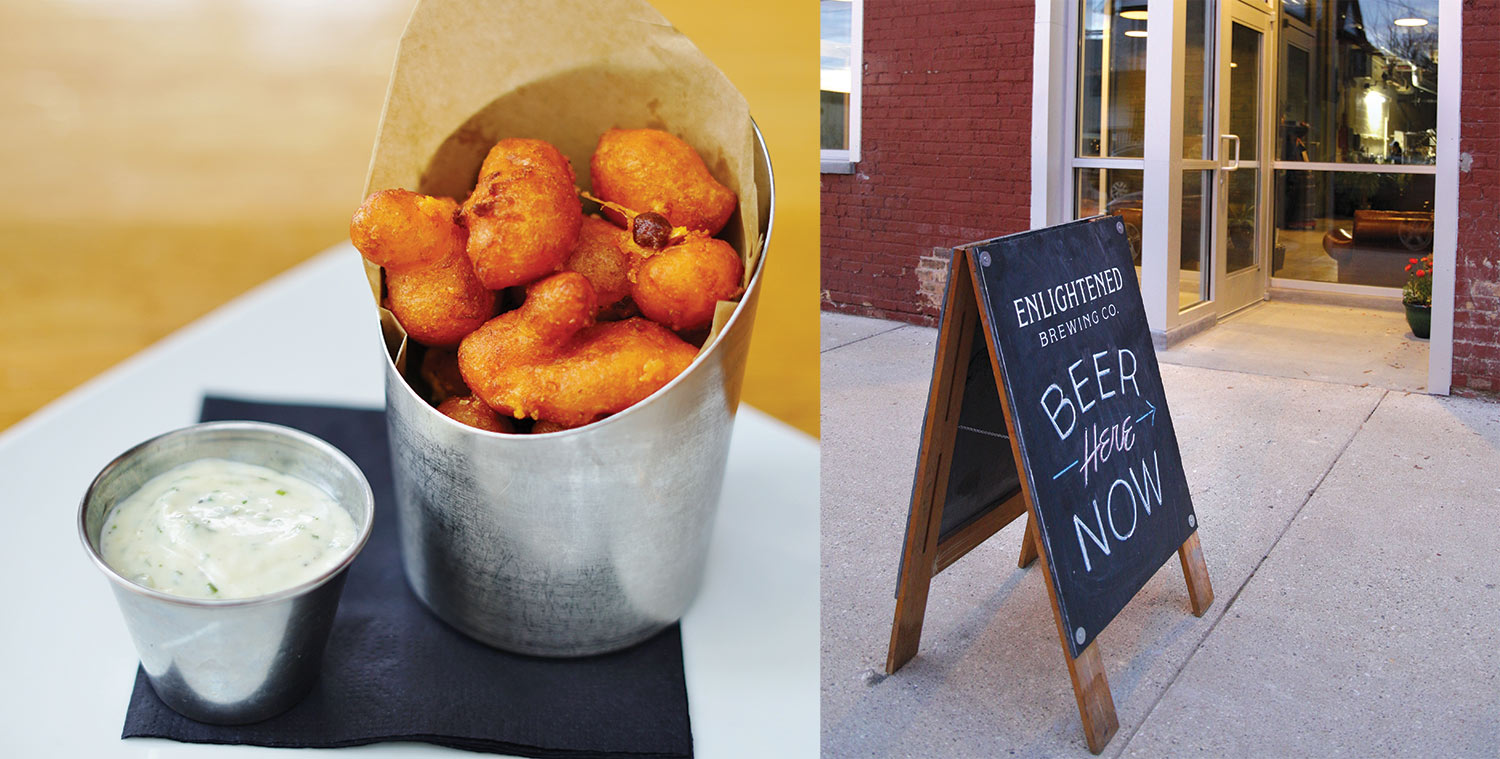
Take a brewery tour in Milwaukee and play Brown Deer—though not necessarily in that order—before heading northwest to Erin Hills, Lawsonia, Sand Valley and SentryWorld, or north to Kohler. Complete your trip with a tour of historic Lambeau Field in Green Bay, known around these parts as Titletown USA. It’s home to the Packers and the site of the famous “Ice Bowl” 1967 NFL Championship Game played in sub-zero temperatures and won, of course, by the Pack.
Oh, and one more thing: save room for some cheese curds. Like the golf here, they’re memorable.
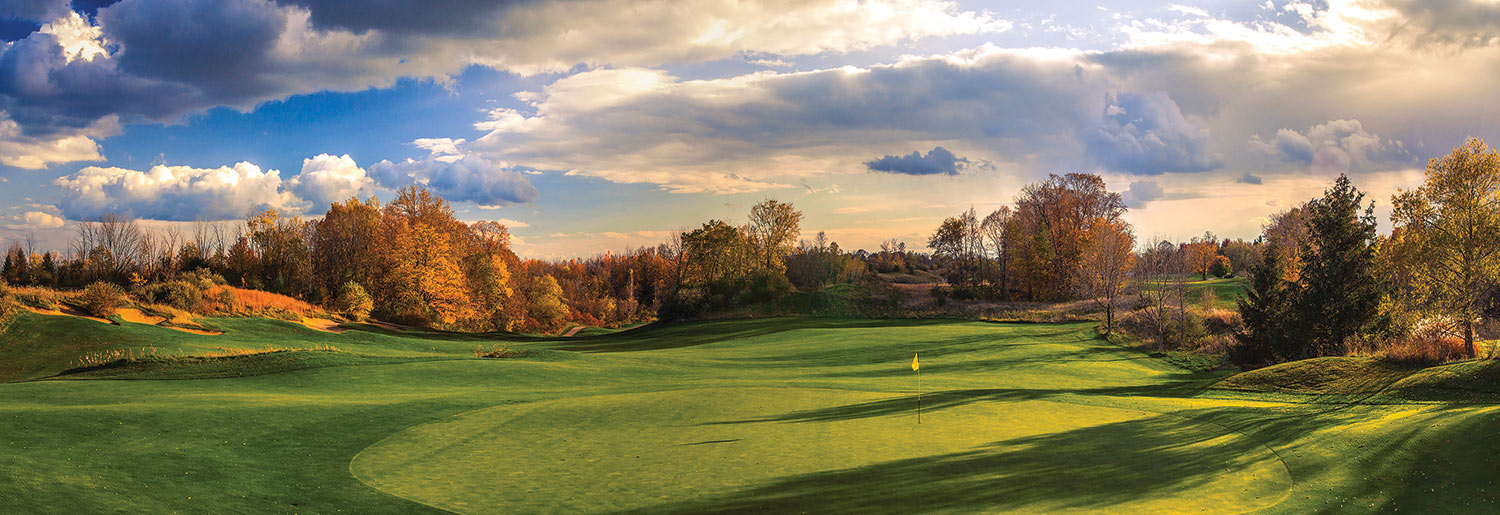
One of Arnold Palmer’s proudest achievements in course design is the par-72 championship course at The Bog, in Saukville, 25 miles north of Milwaukee, almost midway between the city and Kohler. The par-72 layout runs through a stunning 300-acre property, bringing in ancient woodlands, the natural wetlands of the Cedarburg Bog, rolling hills and thriving wildlife.

Follow Us On


| Cookie | Duration | Description |
|---|---|---|
| cookielawinfo-checkbox-analytics | 11 months | This cookie is set by GDPR Cookie Consent plugin. The cookie is used to store the user consent for the cookies in the category "Analytics". |
| cookielawinfo-checkbox-functional | 11 months | The cookie is set by GDPR cookie consent to record the user consent for the cookies in the category "Functional". |
| cookielawinfo-checkbox-necessary | 11 months | This cookie is set by GDPR Cookie Consent plugin. The cookies is used to store the user consent for the cookies in the category "Necessary". |
| cookielawinfo-checkbox-others | 11 months | This cookie is set by GDPR Cookie Consent plugin. The cookie is used to store the user consent for the cookies in the category "Other. |
| cookielawinfo-checkbox-performance | 11 months | This cookie is set by GDPR Cookie Consent plugin. The cookie is used to store the user consent for the cookies in the category "Performance". |
| viewed_cookie_policy | 11 months | The cookie is set by the GDPR Cookie Consent plugin and is used to store whether or not user has consented to the use of cookies. It does not store any personal data. |